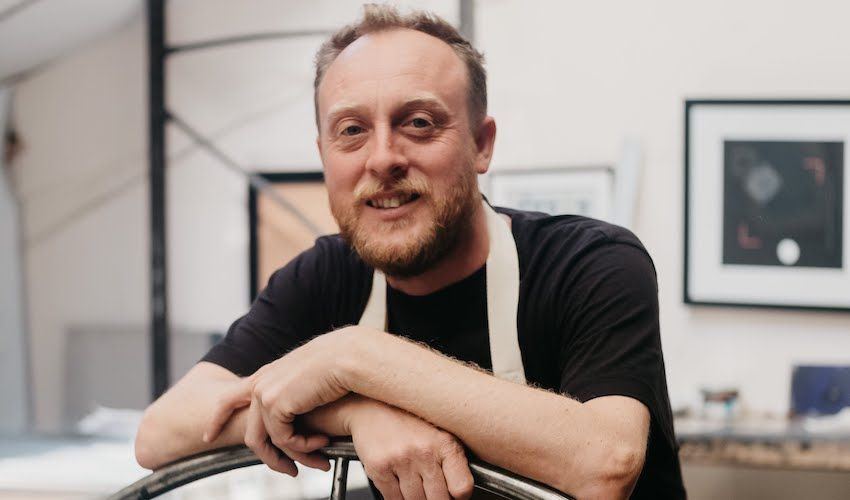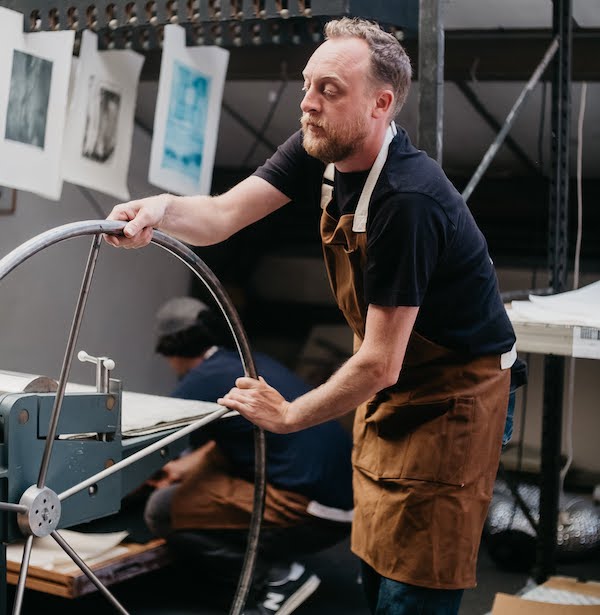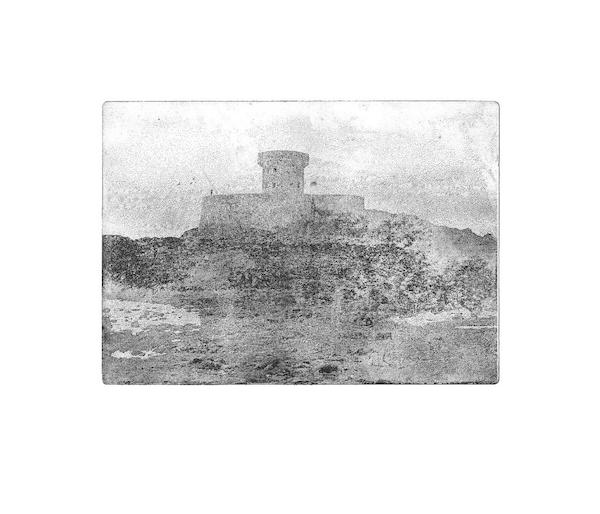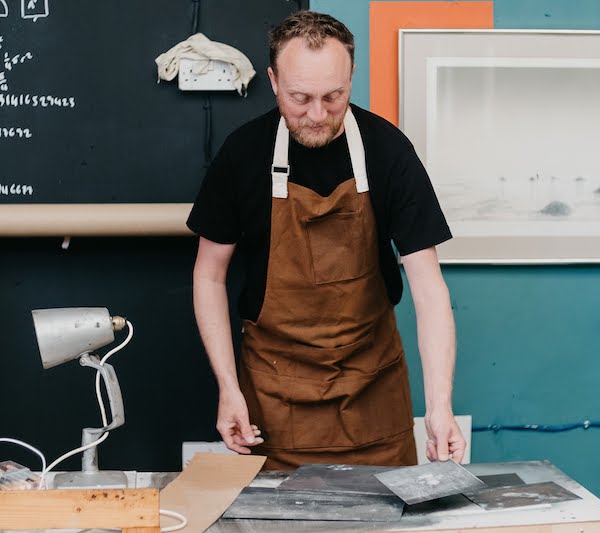

Local printmaker Tim Le Breuilly is all about breaking the rules of his trade.
Since his very first etching – created while he was studying Architectural Conservation at Edinburgh University – Tim has been breaking the conventions of the practice, which involves creating incisions, or ‘intaglios’ on a metal plate through the corrosive action of an acid.
“If I followed the stages I am supposed to, I would probably end up with what I set out to do but by doing it like this, there’s a magic, something happens that makes it different. It’s almost like setting up to fail, but in a good way," he explained.
“The way I approach etching is very different from what a traditional printmaker would do,” Tim explains. Where most artists use copper, which produces “nasty fumes,” he prefers aluminium.

Pictured: An etching in progress...
“I play around with the process,” he continues.
“Things can go wrong but the results are nice. It’s nice to have limitations to push against. I like finding ways to subvert the process. With painting, there’s not so much limitations, you have the canvas and you just do what you wish.”
“It’s just something that appeals to me,” Tim adds. “It’s surrendering to a lack of control.”

Pictured: Tim creates his etchings with aluminium instead of copper.
While etchings created with aluminium do not last as long as the ones created with copper, Tim says it’s not an issue for him.
“Print making is making multiples of things but mine are just one offs that can’t be repeated. The more the acid goes in the plate the less clear the image is. As the work is making itself, it is destroying itself.
Tim returned to Jersey just two years ago after nearly 20 years away. “Circumstances brought me here but at the end of the day it’s home for me,” Tim admits.

Pictured: Most of Tim's subject matter still focuses on heritage buildings.
He had left in the late 90s for a foundation course in an art foundation, he was then selected for the prestigious Slade School of Fine Art in 1998. After graduating in 2002, he stayed in London before packing his bags for Edinburgh.
There, he worked as a gallery technician, hanging up other artist’s paintings and setting up sculptures, ran a junk shop as a gallery for a year with a group of fellow artists before returning to college to study architectural conservation.
“It was based at the Arts College. We were looking at old buildings and how to look after them. I started making etchings of the old buildings. One of the first was a ruined crofter’s cottage on an island off Orkney.”

Pictured: Tim picked up etching while studying Architectural Conservation at Edinburgh University.
This first etching informed Tim’s practice and to this day, most of his subject matter still focuses on heritage buildings. “I try and catch a sense of place, the spirit of the building.”
Earlier this year, Tim presented ‘Lé Galvaûdeaux’ - which means ‘wanderer’ or ‘roamer’ in Jèrriais - at the Link Gallery, a collection of prints, etchings and oil paintings, which also feature Les Minquiers and some other remote Scottish islands.
This month, four of his pieces, including a night time seascape, are on display at CCA Galleries as part of the Summer Exhibition.
Pictured: Tim at work on his first ever mural, created with the help of the pupils at Bel Royal School.
He will also reveal his first ever mural, created as part of the Skipton School Mural Project, on 27 July. Although his early artistic ventures involved oil paintings, Tim admits he doesn’t paint as much as he used to. Yet, his past experience on large scale paintings proved useful when tackling a wall.
In the midst of all of this, Tim also finds time to teach etching at Highlands College. “It’s really hands on,” he says. “Aluminium is a lot less toxic and a lot less expensive than copper so the students can experiment a lot more. Sometimes if they don’t have an art background they can be quite reserved but I try and demystify a lot of it.”
This feature first appeared in Connect. Read the July edition here.
Comments
Comments on this story express the views of the commentator only, not Bailiwick Publishing. We are unable to guarantee the accuracy of any of those comments.